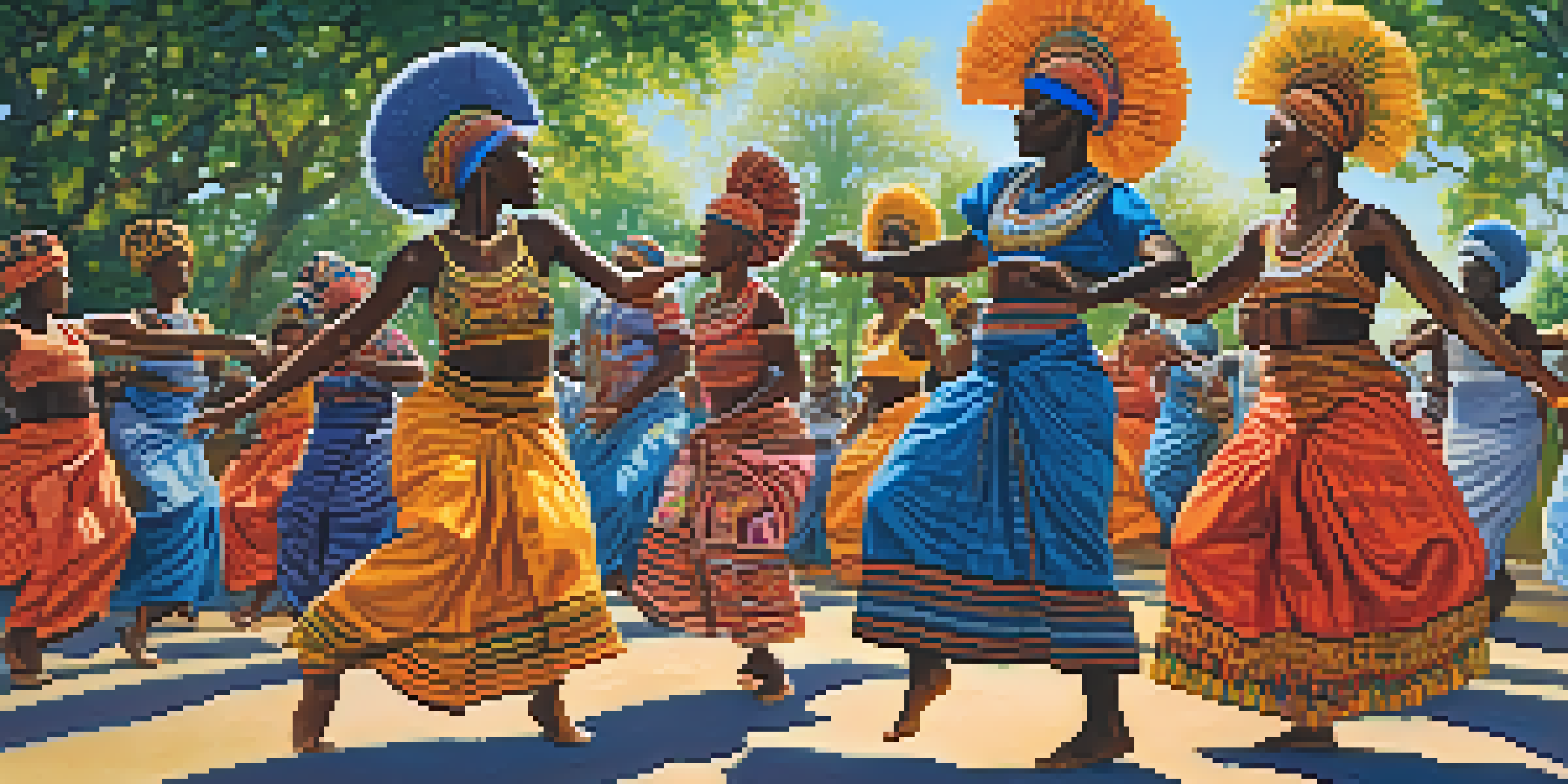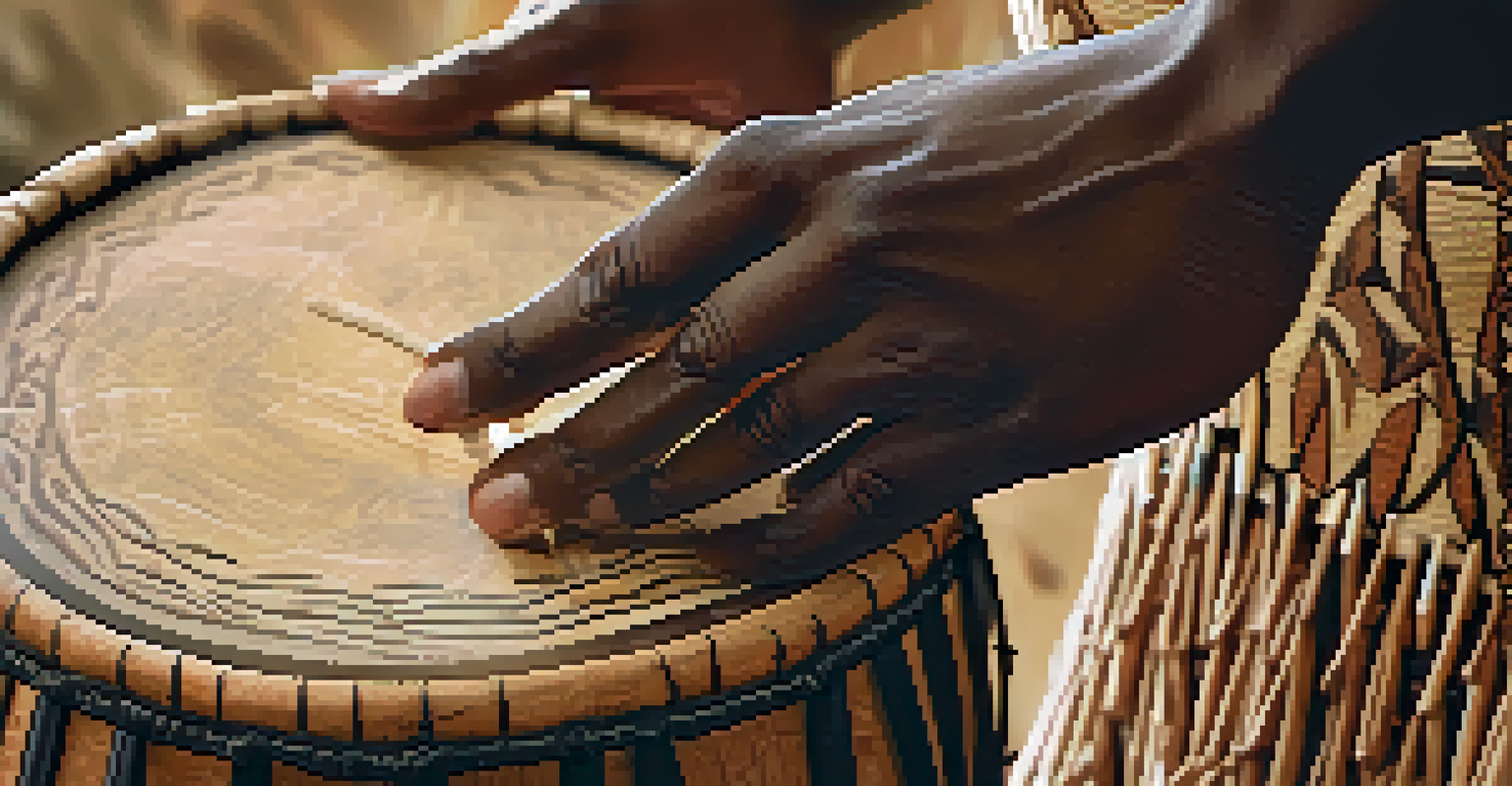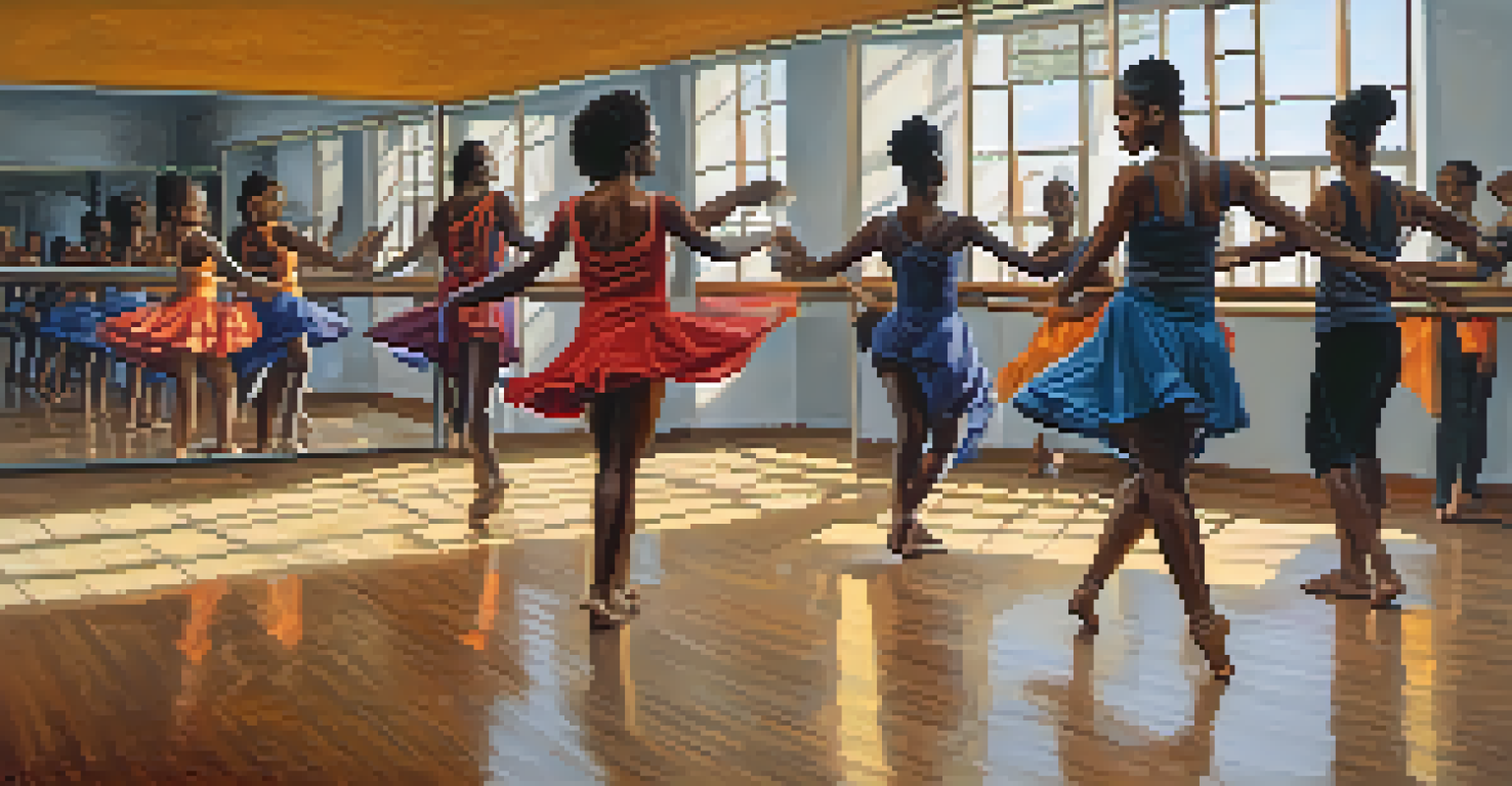The Impact of African Rhythms on Contemporary Dance Forms Today

Understanding African Rhythms and Their Origins
African rhythms are deeply rooted in the continent's diverse cultures and histories. They encompass a variety of musical styles, instruments, and dance forms that have evolved over centuries. Each rhythm reflects the traditions, stories, and social life of the people, making them integral to communal celebrations and rituals.
Dance is the hidden language of the soul.
These rhythms often emphasize polyrhythmic structures, where multiple rhythms are played simultaneously. This complexity creates a rich auditory experience, inviting dancers to express themselves in dynamic ways. The communal aspect of these rhythms fosters a sense of unity and shared identity among performers and audiences alike.
By understanding the origins of African rhythms, contemporary dancers can better appreciate their significance. This appreciation often leads to the integration of these rhythms into modern dance forms, bridging the past with the present and creating a vibrant tapestry of movement and sound.
The Role of Dance in African Cultures
In many African cultures, dance is not just entertainment; it serves as a vital means of communication and expression. It plays a crucial role in storytelling, spiritual practices, and social gatherings, often conveying messages that words alone cannot. Through dance, performers connect with their heritage and share their narratives with audiences.

Traditional African dances are often performed in groups, highlighting the importance of community. The choreography reflects the rhythms and movements inherent to specific cultural practices, allowing for a collective experience that is both celebratory and reflective. This communal nature is something that resonates with many contemporary dance forms today.
Cultural Significance of Dance
Dance in African cultures serves as a vital means of communication and expression, deeply rooted in storytelling and communal experiences.
As contemporary dancers draw inspiration from these traditional practices, they often incorporate elements that emphasize community and storytelling. This melding of styles creates a dialogue between old and new, enriching the dance landscape and offering fresh perspectives on cultural expressions.
Influence on Contemporary Dance Styles
African rhythms have significantly influenced various contemporary dance styles, including hip-hop, jazz, and modern dance. Choreographers often infuse their work with African-inspired movements and patterns, creating a fusion that is both innovative and respectful. This blending allows for a richer exploration of rhythm and physicality in dance.
Music is the shorthand of emotion.
For instance, hip-hop dance often incorporates elements of African dance, particularly in its use of rhythm and body isolation. The playful nature of African dance can be seen in the way hip-hop dancers express themselves, emphasizing spontaneous and dynamic movement. This connection highlights the ongoing legacy of African rhythms in shaping modern dance forms.
Moreover, many modern dance companies are now including African-inspired choreography in their performances, showcasing the versatility and relevance of these rhythms. This trend not only honors the cultural roots but also invites a broader audience to engage with and appreciate the depth of African dance traditions.
Globalization and Cross-Cultural Exchange
In our interconnected world, dance has become a medium for cross-cultural exchange, with African rhythms making their mark globally. Dance studios and festivals around the world are increasingly incorporating African dance workshops, fostering a greater understanding and appreciation of these rich traditions. This has led to a wider recognition of the contributions of African culture to the global dance scene.
As dancers from different backgrounds engage with African rhythms, they often adapt and reinterpret them, creating new hybrid forms. This evolution is exciting, as it allows for the continuous growth of dance as an art form. It also highlights the importance of cultural exchange in enriching artistic expression and fostering inclusivity in the dance community.
Influence on Modern Dance Styles
African rhythms significantly shape contemporary dance forms like hip-hop and jazz, enriching their movement and rhythmic complexity.
However, it is essential to approach this exchange with respect and sensitivity. Acknowledging the origins of the rhythms and movements is crucial to maintaining the integrity of the traditions while celebrating their influence in contemporary dance.
Education and Preservation of African Rhythms
Education plays a vital role in preserving African rhythms and dance forms for future generations. Dance schools and cultural institutions are increasingly offering courses that focus on traditional African dance, emphasizing its historical and cultural significance. By educating dancers about these rhythms, we ensure that they are not lost in the shuffle of globalization.
Workshops and community events also serve as platforms for sharing knowledge and celebrating African dance traditions. These initiatives not only preserve the art form but also encourage participation from diverse communities. This engagement fosters a deeper appreciation for the richness of African cultures and their contributions to the dance world.
Additionally, many dancers are becoming advocates for the preservation of African rhythms by incorporating them into their choreography. This commitment to honoring the roots of the art form helps to keep the traditions alive and relevant, ensuring that the legacy of African rhythms continues to thrive in contemporary dance.
The Emotional Connection to Rhythm and Movement
One of the most striking aspects of African rhythms is their ability to evoke strong emotions in both dancers and audiences. The infectious beats can inspire joy, celebration, and even introspection, creating a profound connection between the performer and the observer. This emotional resonance is something that many contemporary dancers strive to replicate in their own work.
As dancers engage with African rhythms, they often find themselves tapping into their own emotions and experiences, allowing for a more authentic expression of movement. This personal connection enhances the overall performance, creating a shared experience that resonates with viewers. The ability to convey emotions through rhythm is a skill that transcends cultural boundaries.
Preservation through Education
Education and community engagement are essential for preserving African rhythms and dance, ensuring their relevance for future generations.
Moreover, the improvisational nature of many African dance forms encourages dancers to explore their emotional landscapes. This freedom of expression not only enriches their performances but also fosters creativity and innovation in contemporary dance. It’s a beautiful reminder of how rhythm can unite us all through shared feelings and experiences.
Looking Ahead: The Future of African Rhythms in Dance
As we look to the future, the influence of African rhythms on contemporary dance is poised to grow even stronger. With the continued globalization of dance and the increasing popularity of diverse styles, we can expect to see more innovative fusions that honor traditional African movements. This evolution will likely keep the cultural conversations alive and relevant in the dance community.
Emerging choreographers are already experimenting with blending African rhythms with various dance styles, pushing the boundaries of creativity. This exploration not only highlights the versatility of African rhythms but also invites collaboration among dancers from different backgrounds. Such exchanges can lead to groundbreaking works that reflect our shared human experience.

Ultimately, the future of African rhythms in dance is about celebration, connection, and growth. By embracing these rich traditions and integrating them into contemporary practices, we ensure that the legacy of African dance continues to thrive and inspire generations to come.